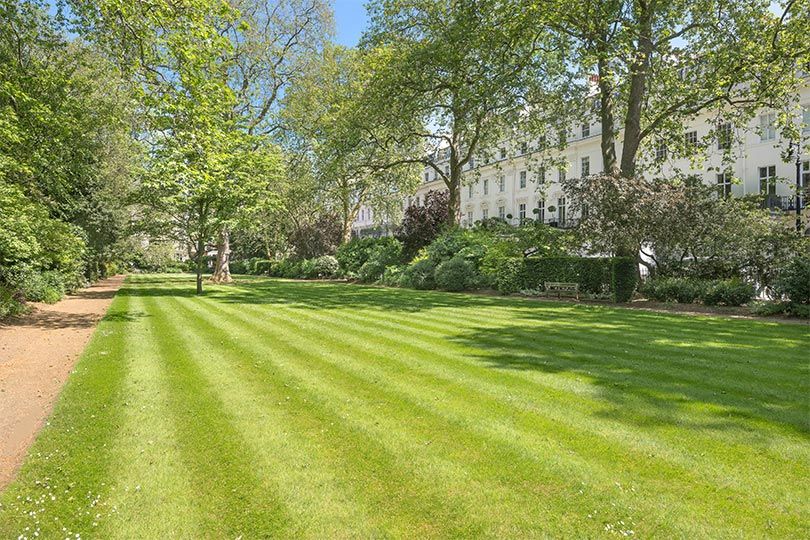
Convenience, Community and Connectivity: What makes us move?
From new-build flats in buzzing metropolises to seaside properties with panoramic views, where we want to live typically evolves over time.


London is renowned for its historical landmarks, cultural diversity, and bustling urban life. Yet, amidst the city’s vibrancy, there’s a hidden network of green spaces that offers its residents a tranquil escape: communal gardens. Our latest Housing Futures Survey revealed that one in five people looking to move to or within London wanted a communal garden. This compares to 8% for the rest of the UK.
These shared gardens, ranging from historic garden squares to modern community gardens and resident roof terraces, have become an integral part of London living. But what makes these gardens unique to London? And how has the concept of communal gardens evolved over time? We dive into the leafy world of London’s communal gardens.
The story of London’s communal gardens begins with the iconic garden squares, which date back to the 17th and 18th centuries. These lush, private enclaves were initially designed as part of the grand town planning efforts in areas like Belgravia, and Kensington. Developers created these squares to add prestige to their residential developments, offering a slice of nature in the heart of the city.
These garden squares are often enclosed by elegant railings, accessible only to the residents whose homes surround them. The original purpose was twofold: to provide a serene space for residents to enjoy and to enhance the value of the surrounding properties. James Gow, Head of London Sales, highlights these squares remain some of the most sought-after communal gardens in London, offering a sense of exclusivity and history. “Properties on an original garden square always command a premium and are highly sought after.”
Take Notting Hill, which is defined by the patchwork of its communal gardens and, as the 1999 film of the same name depicts, it provides a unique green landscape which isn’t mirrored in such abundance anywhere else in London, says Miles Meacock, Head of Notting Hill. “The gardens define Notting Hill and everyone who lives in Notting Hill prides themselves on this very special area. Families who buy here rarely move outside the area once here and there is huge aspiration to buy something with the all-important right of access to any one of the postcode’s communal gardens”, he adds.
As London grew, the concept of communal gardens evolved beyond the confines of garden squares. In more densely populated areas, shared gardens became a practical solution for providing green space in residential developments or converted houses. These gardens are typically open to all residents of a particular building or housing complex, offering a communal space where neighbours can interact, children can play, and everyone can enjoy a breath of fresh air.
Shared gardens have become increasingly popular in recent years as Londoner's prioritise outside space following the pandemic. “They cater to the modern Londoner’s need for community, providing a space where people can connect outside of their homes” Lulu Egerton, Senior Director in Sloane Street, comments. “These gardens are often designed with a variety of uses in mind, from quiet corners for reading to play areas for children, and even communal BBQ spots for social gatherings” she adds.
While gated garden squares and shared gardens are typically maintained by local authority and professional gardeners, London’s parks and community gardens are a different breed. Hugh Ball, Head of Islington, explains these are green spaces where local residents come together to grow plants, vegetables, and flowers. “They often spring up in the most unexpected of places where imagination for the better use of unused pockets of land, transforming derelict or underused spaces into vibrant, productive gardens.”
He adds “Community gardens serve a variety of purposes: they promote sustainable living, provide fresh produce, help maximise carbon footprint and foster a strong sense of community. These gardens are open to anyone who wants to get involved, making them inclusive and accessible.”
Hugh points to the Culpeper Community Garden, one of the most valued green public spaces in Islington. This beautiful garden is both a city park and an environmental community project, managed by and for local people to come together to appreciate and enhance their environment.
As London’s skyline continues to rise, so too does the concept of communal gardens. James Burrows, a Director in London New Homes Sales, believes that resident roof terraces have become a modern solution to the city’s lack of green space. “These rooftop gardens offer spectacular views of the London skyline, combined with the peace and tranquillity of a garden far above the hustle and bustle of the streets below.”
Roof terraces are often designed with a contemporary edge, featuring stylish planters, seating areas, and even outdoor kitchens. He adds “they provide a space where residents can relax, entertain guests, or simply enjoy the city from a different perspective. What’s more, they also contribute to urban biodiversity, attracting birds, bees, and butterflies to the rooftop, and even help to reduce the urban heat island effect.”
Londoners have a special relationship with their communal gardens. In a city where space is at a premium, these green oases offer a much-needed retreat from the fast pace of urban life. They provide a sense of community, where neighbours can meet and friendships can form. They also offer a connection to nature, which is especially valuable in a city as large and densely populated as London.
Matt Henderson, Residential Research, says “Communal gardens have evolved to reflect the changing needs and values of London’s residents. From the exclusivity of garden squares to the inclusivity of community gardens, and the innovation of roof terraces, these spaces continue to adapt, providing the green lungs that keep the city vibrant and liveable.”